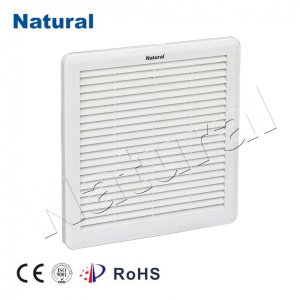Introduction

In the modern era, where urbanization and industrialization are on the rise, ensuring good air quality has become an increasingly important concern. Two essential components that contribute significantly to maintaining clean and comfortable indoor air are fans and filters. These unassuming devices work silently behind the scenes, yet their impact on our well-being is profound. This article delves into the world of fans and filters, exploring their roles, benefits, and the ways in which they synergistically improve indoor environments. The Role of Fans Fans are ubiquitous devices found in homes, offices, factories, and more. Their primary function is to circulate air, creating a flow that helps disperse pollutants and regulate temperature. By promoting air movement, fans facilitate the distribution of fresh air throughout a space, preventing the accumulation of stale or contaminated air. This continuous air exchange is particularly crucial in areas with limited ventilation or a high concentration of occupants. Fans also contribute to a more energy-efficient environment. In warmer climates, fans can supplement air conditioning systems by promoting better air circulation, allowing occupants to maintain comfort at higher thermostat settings. This not only reduces energy consumption but also lowers utility bills and minimizes the overall carbon footprint. Understanding Filters While fans enhance air movement, filters play a pivotal role in air purification. Airborne particles, such as dust, pollen, pet dander, and even harmful microorganisms, can have adverse effects on respiratory health and overall well-being. Filters trap these particles, preventing them from recirculating and thus improving indoor air quality. High-efficiency particulate air (HEPA) filters are among the most effective types. These filters are capable of capturing particles as small as 0.3 microns with an efficiency of 99.97%. By removing allergens and pollutants, HEPA filters create an environment that is especially beneficial for individuals with allergies, asthma, or other respiratory conditions. The Synergy of Fans and Filters The true power of improving indoor air quality lies in the synergy between fans and filters. When used together, these components create a dynamic system that significantly enhances the air we breathe. Fans help draw air through filters, ensuring that particles are efficiently captured and removed from circulation. This collaboration not only reduces indoor pollution but also creates a more comfortable and refreshing atmosphere. Benefits Beyond Health The advantages of integrating fans and filters extend beyond health considerations. Enhanced air quality contributes to increased productivity and cognitive function. Research has shown that cleaner air can lead to improved concentration, better decision-making, and reduced absenteeism in educational and professional settings. Furthermore, by relying on fans and filters to maintain indoor air quality, there is potential for reduced reliance on energy-intensive ventilation systems. This can lead to significant energy savings, making homes and buildings more sustainable and environmentally friendly. Choosing the Right Equipment Selecting the appropriate fans and filters for a specific environment is crucial to achieving optimal results. Factors such as room size, occupancy, and specific air quality goals should all be considered. Consulting with professionals in the field can help ensure that the chosen equipment is tailored to the unique needs of the space. Conclusion In a world where indoor air quality is increasingly compromised by pollutants and contaminants, the partnership between fans and filters emerges as a powerful solution. These unassuming devices work hand in hand to create a healthier, more comfortable, and energy-efficient indoor environment. By understanding the roles, benefits, and synergy of fans and filters, we can take proactive steps toward improving our overall well-being and creating spaces that promote a higher quality of life.